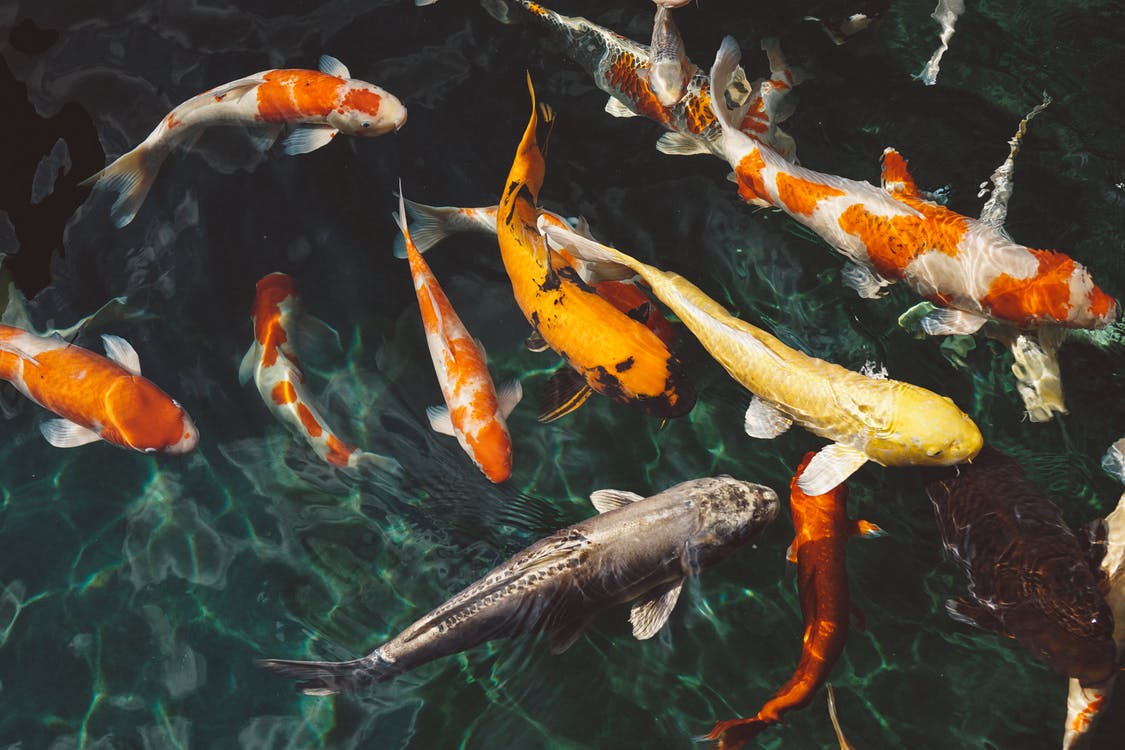
Without good water maintenance it is quite impossible for fish and other pond occupants to enjoy long-term health.
High water quality in your pond is very important for keeping healthy fish. We gets lots of pond keepers coming to us with queries regarding water maintenance so have created this article to cover all aspects of water quality and management.
Although water has an extremely simple chemical composition, two atoms of hydrogen to one atom of oxygen, is it a fascinating substance. Given time, it will dissolve or erode virtually anything, meaning that most 'natural' water is in fact a "soup" consisting of water molecules and a host of other dissolved and suspended compounds.
Of these substances, the ones that are of highest importance to the pond keeper are the ones which affect the acidity and alkalinity of the water. Of special interest are the potential killers - compounds that contain dissolved toxins such as ammonia, nitrates, chlorine and chloramine.
Acidity/ Alkalinity
The pH scale, used to measure the acidity/alkalinity of water, ranges from 0 to 14. A reading of pH7 represents water that is neither acid nor alkaline, i.e. neutral.

Fish blood has a pH of around 7.4 so pond water with a pH close to this would be ideal. An acceptable range would be 6.5 - 9.
The pH balance of a pond can fluctuate over a 24hr period due to photosynthesis (from pond plants) and respiration (from the fish). Generally speaking, pH is highest at dusk and lowest at dawn. Acid rain, run-off, fish excrement, dead vegetation, and limestone can also cause pH swings
The pH value of pond water can be easily checked using a test kit or electronic pH reader. Both are widely available from garden centres, aquatic stores and online retailers.
If you find that your pond has an undesirable pH you can buy adjustment treatments to raise or lower the pH value. If the reading from a test is extremely low or extremely high then it is advised to do a partial water change. For ponds with fish, Tonic Salt will alleviate the effects of poor water quality.
Ammonia/Nitrites/Nitrates
Ammonia finds its way into the pond primarily via fish waste but also through rotting vegetation, uneaten food and dead wildlife.
A good filtration system should remove ammonia in the biological stage. Here, bacteria grow on bio-media and will break down the ammonia into nitrite. A different type of bacteria then breaks down this dangerous nitrite into nitrate - a substance which can be absorbed by any plants in the pond.
If the ammonia levels are too high then fish will start to develop symptoms such as red/swollen gills and 'raggy' looking fins. The higher the ammonia level, the lower the fishes ability to absorb oxygen and they may start to display signs such as gasping at the surface. If you do notice this behaviour it is important to test the water to determine the cause - be that high ammonia, high nitrates or simply low oxygen levels.
The main causes of evelated ammonia levels include overstocking the pond, overfeeding the fish, allowing leaves/plants to fall to the bottom and decay, and not having an adequate filtration system in place.
To treat high levels of ammonia you can use a specialised treatment, Ammonia Remover. These treatments are available from aquatic stores and online retailers.
Once the ammonia levels are at 0, it is advised that you introduce friendly bacteria into the pond to assist with removing the ammonia in the future. PondXpert Pond Gel Balls are ideal for this as they target the ammonia and nitrates and are safe for use with all fish and pond wildlife.
Chlorine and Chloramine
Chlorine and chloramine are added to tap water to make it safe for human consumption however both are toxic to fish. You can get around this by using rainwater or distilled water however the majority of people will fill their ponds using water from the mains supply and therefore the chlorine levels need to be addressed before any fish are introduced. There are two main methods for doing this, natural and chemical.
Natural
The cheapest method to remove chlorine from the water is just to let it stand. Chlorine is quite volatile and will disappear from the water given a few weeks. With vigorous aeration this time can be reduced. Chloramines are more stable and will not be fully removed using this method.
Chemical
Not everyone has the luxury of time and so look for a product to speed up the process. Dechlorinators are designed specifically for this purpose and will remove chlorine and chloramine overnight, some will even remove ammonia and nitrite such as the PondXpert Tap Tonic.
Keep a close eye on water quality at all times, irrespective of the time of year, as this is key to fish and plant survival. It is difficult to say how often you should test your water since a great deal depends on temperature, stocking levels and frequency of feed. However when a pond is first set up you should check the pH, ammonia and nitrates daily until a regular reading has been established.
Top Tips!
Do not overstock the pond with fish or plants.
When stocking a new pond, introduce fish gradually over a few weeks.
Check water daily during the first few weeks.
Ensure you have the appropriate filtration system for your pond.
Carry out regular maintenance.
Resist over feeding.
